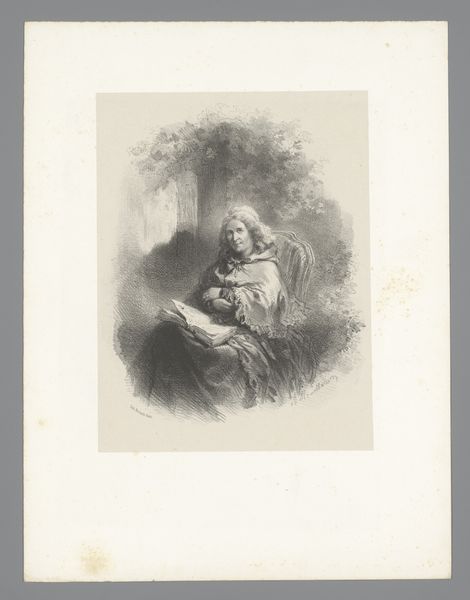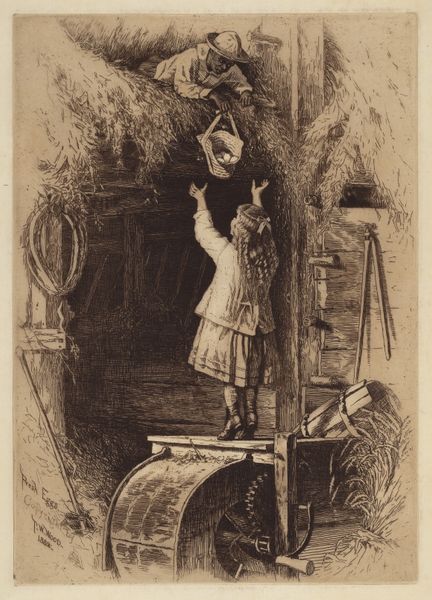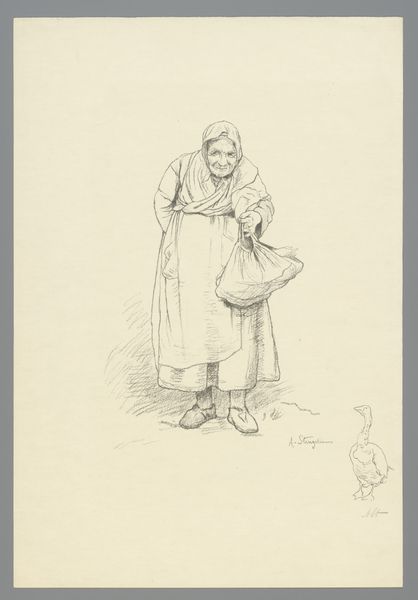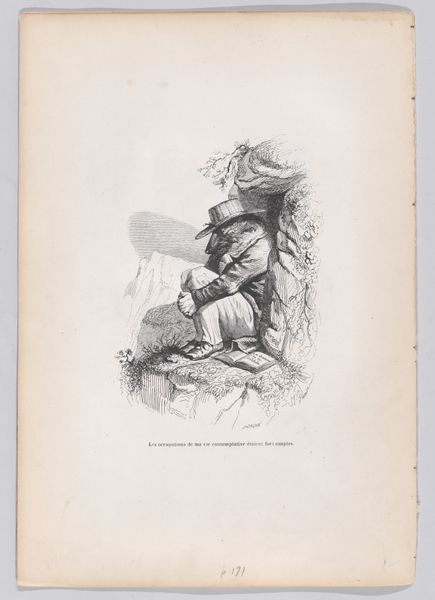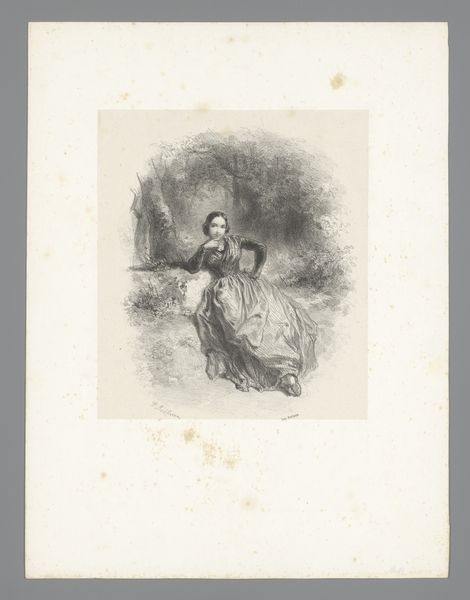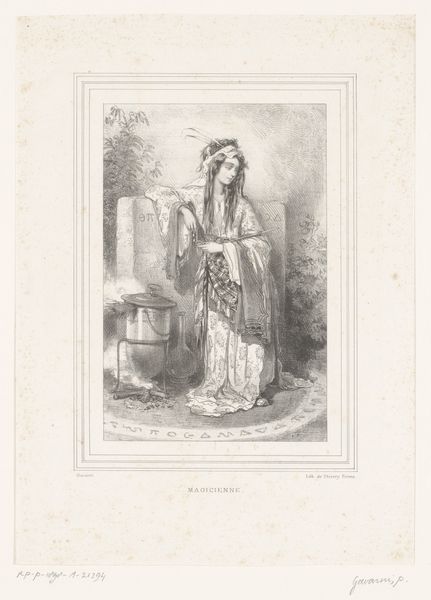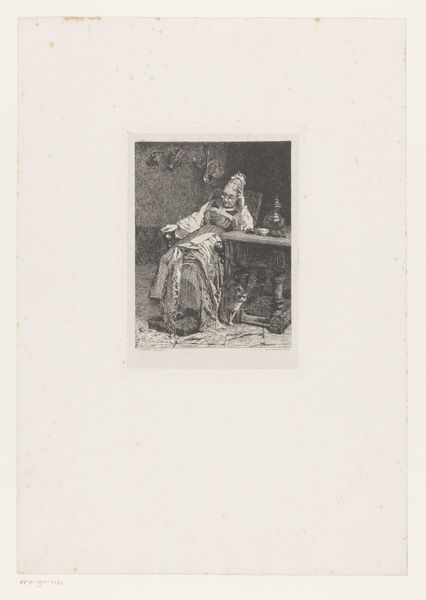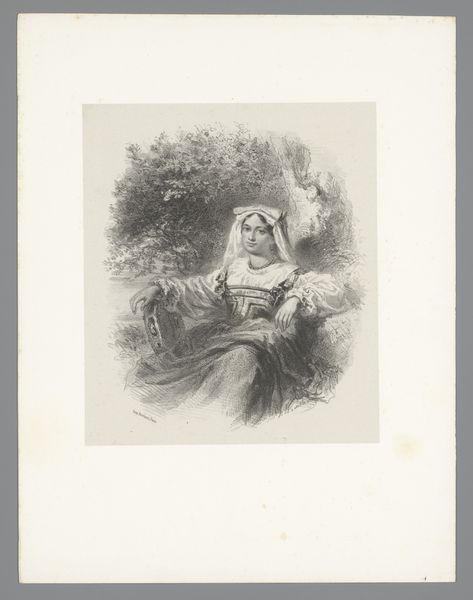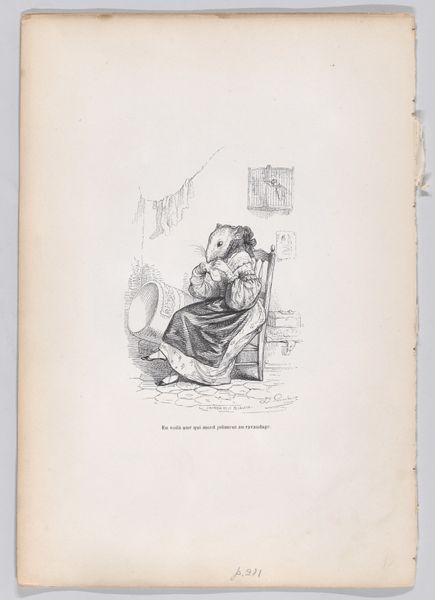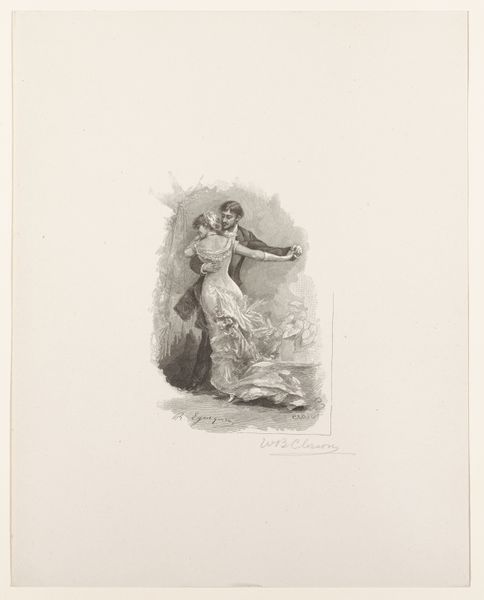
drawing, pencil
#
portrait
#
pencil drawn
#
drawing
#
pencil sketch
#
figuration
#
intimism
#
pencil
#
pencil work
Dimensions: height 250 mm, width 230 mm, height 361 mm, width 273 mm
Copyright: Rijks Museum: Open Domain
Curator: Alexandre Lunois created this pencil drawing, "De veilinghoudster," sometime between 1890 and 1916. Editor: It's quite striking! The kinetic energy practically jumps off the page. The composition, the way the main figure is framed by swirling papers and sketched studies... Curator: The subject, an auctioneer, occupies a fascinating space, both literally in the center, and metaphorically as a woman seemingly wielding power in a male-dominated sphere. Note her firm grasp on the gavel. It suggests more than just professional duty. Consider the period; what statements is Lunois perhaps making about the burgeoning roles of women in commerce? Editor: Intriguing. Formally, the scattered papers and almost ghostly figures create a sense of depth but also ambiguity. There’s no singular focal point, our eyes move across the picture plane. The light pencil work almost gives these items a visual, and ethereal, equivalence. The loose sketching technique does add to its overall vitality. It keeps it dynamic. Curator: Absolutely. And that's why it is interesting to analyze Lunois, working within Intimism, turns to the daily existence of working women and how the female form is captured in its everyday realness through a form that many artists used solely for portraiture or historical and religious scenes. Lunois invites a study of work, femininity and the role that art can play in elevating our interpretation of societal truths. Editor: I appreciate your viewpoint. I still circle back to the initial, formal impression. Lunois guides us with his skillful tonal variety achieved with the pencil itself, building an impactful atmospheric sense, despite the absence of vivid color or bold lines. Curator: Yes, and let's not overlook how that formal approach underscores the nuance of Lunois' narrative. Thank you, this piece brings the past into perspective with our present. Editor: A very worthwhile discussion about both composition and sociohistorical elements, indeed. Thank you.
Comments
No comments
Be the first to comment and join the conversation on the ultimate creative platform.

